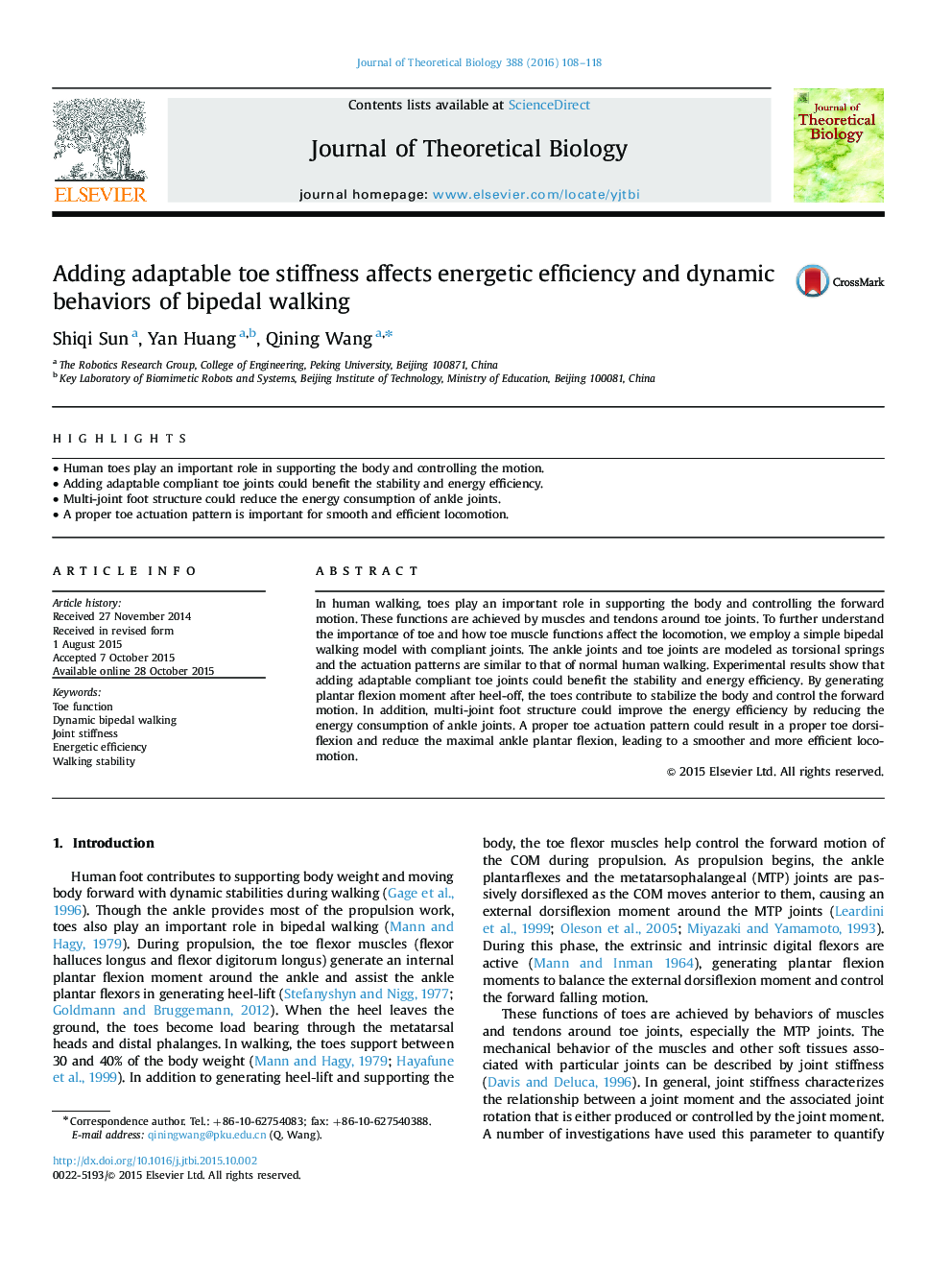| کد مقاله | کد نشریه | سال انتشار | مقاله انگلیسی | نسخه تمام متن |
|---|---|---|---|---|
| 4495999 | 1623822 | 2016 | 11 صفحه PDF | دانلود رایگان |
• Human toes play an important role in supporting the body and controlling the motion.
• Adding adaptable compliant toe joints could benefit the stability and energy efficiency.
• Multi-joint foot structure could reduce the energy consumption of ankle joints.
• A proper toe actuation pattern is important for smooth and efficient locomotion.
In human walking, toes play an important role in supporting the body and controlling the forward motion. These functions are achieved by muscles and tendons around toe joints. To further understand the importance of toe and how toe muscle functions affect the locomotion, we employ a simple bipedal walking model with compliant joints. The ankle joints and toe joints are modeled as torsional springs and the actuation patterns are similar to that of normal human walking. Experimental results show that adding adaptable compliant toe joints could benefit the stability and energy efficiency. By generating plantar flexion moment after heel-off, the toes contribute to stabilize the body and control the forward motion. In addition, multi-joint foot structure could improve the energy efficiency by reducing the energy consumption of ankle joints. A proper toe actuation pattern could result in a proper toe dorsiflexion and reduce the maximal ankle plantar flexion, leading to a smoother and more efficient locomotion.
Journal: Journal of Theoretical Biology - Volume 388, 7 January 2016, Pages 108–118
